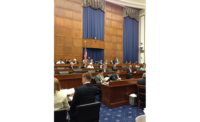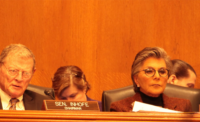The House on Oct. 23 overwhelmingly approved bipartisan legislation to authorize the U.S. Corps of Engineers to build, operate and maintain water resources projects.
Lawmakers approved the Water Resources Reform and Development Act (WRRDA) 417-3.
The bill would authorize badly needed investments in the nation’s lock and dam infrastructure, upgrade deficient levees and maintain ports, harbors and key navigation channels.
The Senate passed a companion bill by an 83-14 vote in May. A conference committee will now need to iron out differences between the two bills.
In a statement issued shortly after the vote, Barbara Boxer (Calif.), the chief Democratic sponsor of the Water Resources Development Act (WRDA) in the Senate and the chair of the conference committee that will reconcile the two bills, said, “I am so pleased that the House passed its water resources bill…so that we can move forward with the House-Senate conference as soon as possible. We must invest in our nation’s flood control projects, navigation routes and ports, and ecosystems.”
The differences between the House and Senate bills are considerable. The Congressional Budget Office has estimated that the House bill would cost $3.5 billion between 2014 and 2018, and $4.7 billion between 2019-2023. With a 10-year CBO score of $8.2 billion, WRRDA authorizes $4 billion less than the Senate version and $15 billion less than the enacted 2007Water Resources Development Act, the most recent bill authorizing Corps projects.
Transportation and Infrastructure Committee Chairman Bill Shuster (R-Pa.), the bill’s chief sponsor in the House, has noted that the spending authorized in WRRDA is more than offset by de-authorization of $12 billion in older, inactive projects that were authorized prior to 2007.
Although neither bill includes earmarks, the House bill would authorize 23 new Corps projects that have received positive reports from the Army’s chief of engineers. The Senate’s language is similar. But for future projects, Shuster’s bill would shift some of the decision-making authority about water-project authorization priorities based on an annual Corps water resources report to Congress. The Senate version does not include this provision.
In another difference, the Senate bill includes a $500-million federal loan program for Corps and Environmental Protection Agency projects, called the Water Infrastructure Finance and Innovation Act. That provision, strongly supported by groups like the Water Environment Federation, is not included in the House version.
Despite the differences, both bills aim to streamline the approval of Corps projects and boost funding for dredging projects by increasing spending from the Harbor Maintenance Trust Fund.





Post a comment to this article
Report Abusive Comment